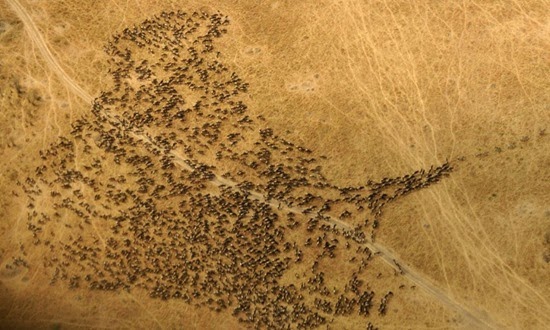
13 Epic Animal Migrations That Prove Just How Cool Mother Nature Is (PHOTOS)
By Brianna Elliott, The Huffington Post, 4 April 2014.
By Brianna Elliott, The Huffington Post, 4 April 2014.
Every morning, we cram ourselves into subway trains or sit in traffic. Commuting may be a part of life for many of us, but our daily journeys are nowhere near as epic or graceful as most animal migrations.
Animals migrate for a variety of reasons - such as to avoid harsh winters, give birth or find food - and each migration is unique and majestic. Lesser flamingos in East Africa's Great Rift Valley migrate when lakes recede or become too alkaline from volcanic ash, for example, and humpback whales migrate thousands of miles to breed.
To aid them in these incredible journeys, migrants take advantage of their resources at hand - like wind or currents - to help them on this amazing journey, according to Live Science. "You evolve to take advantage of abilities that already exist," Hugh Dingle, a professor emeritus at the University of California, Davis, told Live Science in 2010. "Birds already can fly, to take the simplest case, so instead of just restricting flights to short distances, you evolve a mechanism to take flights to long distances."
But, some of these amazing natural phenomena are at risk from climate change. Extreme weather threatens food availability and habitat, especially for ducks and other birds, and some species are at risk from extinction due to climate change, according to Yale Environment 360.
With the spring migration season underway, we're taking a look at some of the most epic animal journeys in photos. Take a look below.
1. Wildebeests
Up to 1.5 million wildebeests, joined by other animals like zebra and gazelle, migrate northward each year from the Serengeti National Park in Tanzania to the Maasai Mara National Reserve in Kenya in search of greener pastures for grazing, according to National Geographic. Their migration is considered one of the most incredible in the animal kingdom, and they cover anywhere from 500 to 1,000 miles.
2. Arctic Terns
These small birds make the longest migration of any animal in the world. Recently, tracking devices revealed they cover more than 55,000 miles annually, migrating from the Arctic to Antarctica and back, writes Audubon magazine.
3. Beluga Whales
Beluga whales - dubbed "canaries of the sea" for their complex calls - migrate in sync with sea ice patterns in Arctic waters. They migrate northward in the spring as sea ice recedes, and then move southward in the fall as sea ice builds again, explains the Pew Charitable Trusts.
4. Sockeye Salmon
Sockeye salmon - found around the northern Pacific coasts of North America and Asia - are anadromous, meaning they live in the ocean but migrate to their natal freshwater streams, lakes and rivers to spawn, says NOAA. Both the females and males die within a few weeks of spawning.
5. Red Crabs
Every fall on Christmas Island in the Indian Ocean, massive groups of red crabs descend from the forest to the coast to breed and release eggs into the sea. Their march is timed with rain, and the breeding sequence is linked to moon and tidal phases, according to Parks Australia, a government entity that supports Australia's Director of National Parks. Click here to watch the landscape overtaken by a sea of red during their migration.
6. Emperor Penguins
The largest penguin species makes brutal migrations each year around Antarctica to breed and raise their chicks, according to environmental non-profit and activists group, the Centre for Biological Diversity. They're the only penguin species to spend the winter on Antarctic ice.
7. Cownose Rays
Cownose rays migrate twice a year in response to the seasons: northward in the spring and southward in the fall. Migrating in massive groups called "fevers," the Atlantic cownose rays are said to migrate in schools of hundreds or thousands individuals, says Chicago's Shedd Aquarium.
8. Red Knots
These rust-coloured shorebirds have one of the longest migrations in the animal kingdom - a tremendous feat for a species with just a 20-inch wingspan. They fly over 9,000 miles biannually from their Arctic nesting habitat to wintering grounds in Tierra del Fuego, an archipelago at the southern tip of South America, reports Audubon magazine.
9. Horseshoe Crabs
Each spring and summer, horseshoe crabs migrate from deep-bay and continental shelf waters and crawl onto beaches to spawn, according to the Maryland Department of Natural Resources. Spawning peaks around full and new moon high tides in May and June, and the spectacle is definitely a sight to see.
10. Monarch Butterflies
Monarch butterflies have the longest migration of any butterfly species - traveling up to 3,000 miles from North American wintering grounds to either central Mexico or the California coast, according to the National Zoological Park, a part of the Smithsonian Institution.
11. Pacific Walruses
Pacific walruses - which inhabit the northern seas off Russia and Alaska - migrate in sync with pack ice, traveling south during the winter and north in the spring through the Bering Straight, according to the Wildlife Conservation Society. Females give birth during the spring migration north.
12. Spiny Lobsters
These crustaceans migrate seasonally, moving to deeper, offshore waters in the fall as temperatures drop and vice versa. They form giant single-file lines - known as queues - and walk day and night until they find their desired location, according to the Department of Biology at the University of North Carolina Chapel Hill.
13. Caribou
Like many animals, caribou head north in the warmer months and south in the cooler months. The mothers give birth during migration, and the calves can stand and run short distances shortly after birth - allowing them to keep up with herds during their long migration, according to the U.S. Fish and Wildlife Service.
Top image: Wildebeests migration. Credit: T. R. Shankar Raman/Wikimedia Commons.
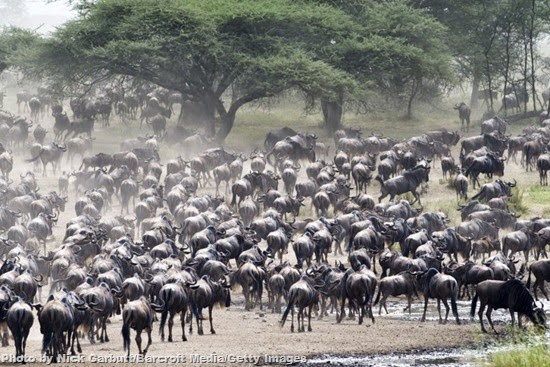
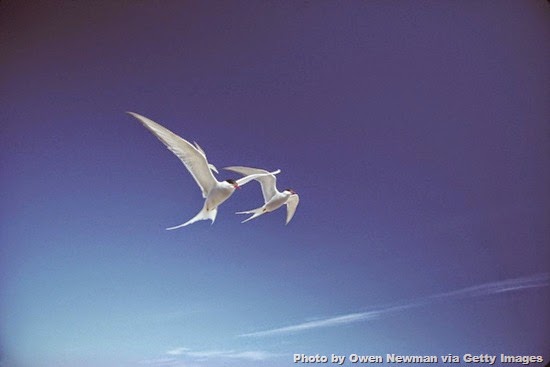

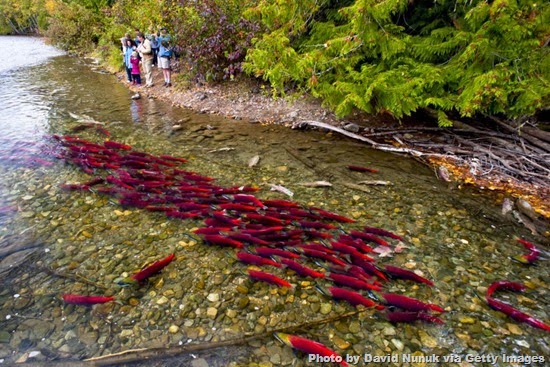
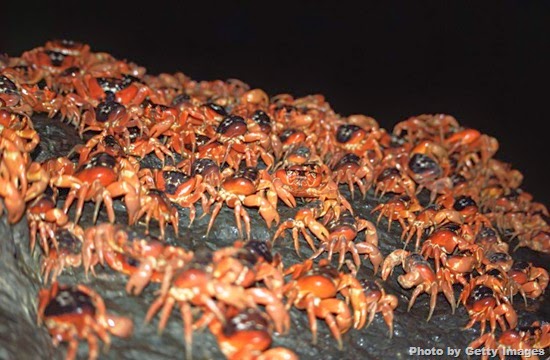
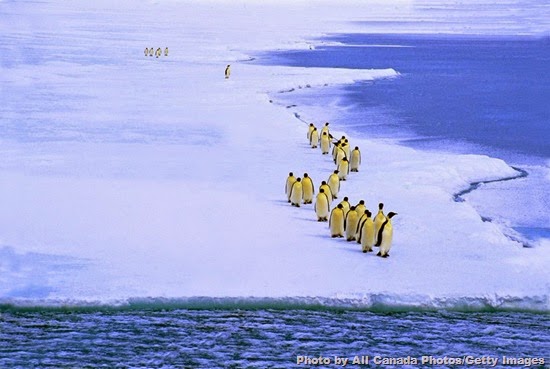
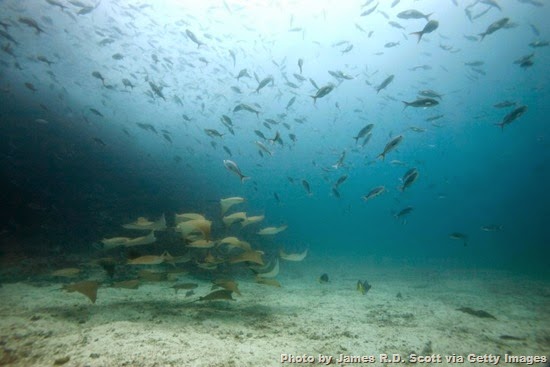
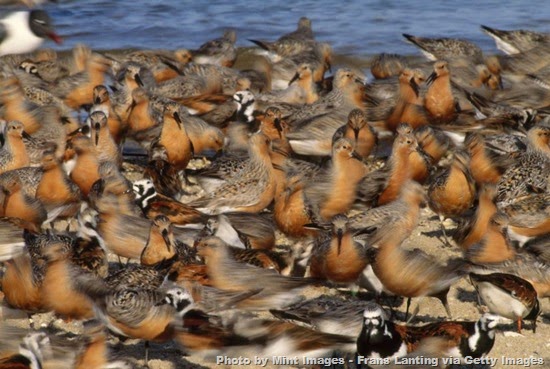
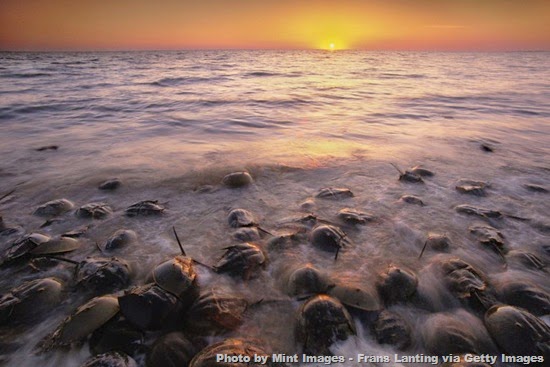
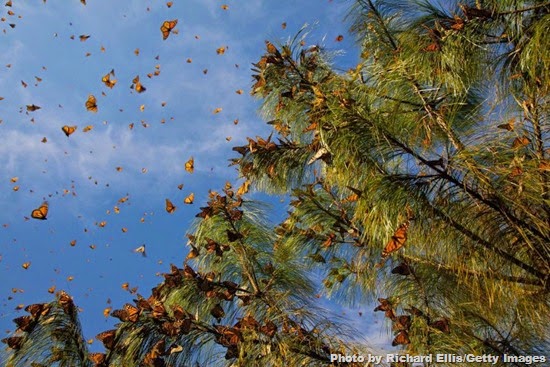
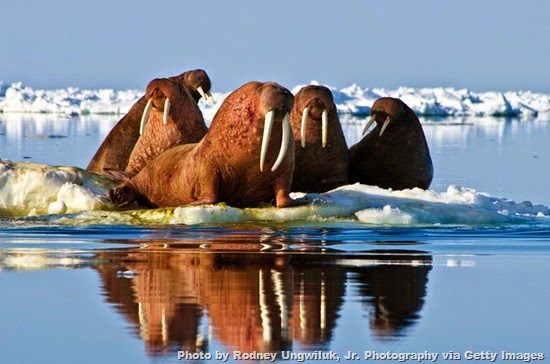
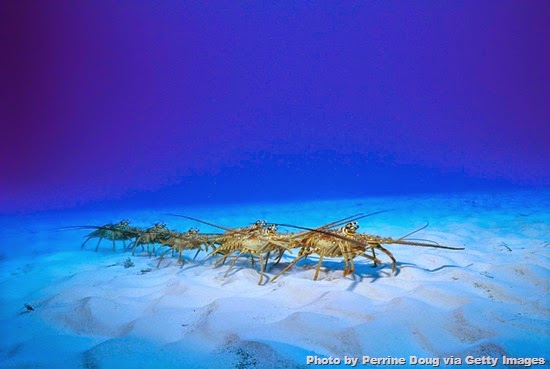
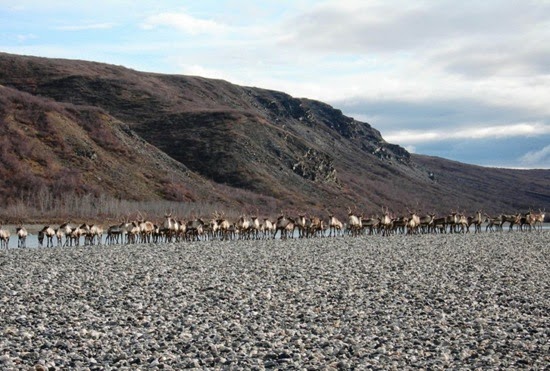
No comments:
Post a Comment
Please adhere to proper blog etiquette when posting your comments. This blog owner will exercise his absolution discretion in allowing or rejecting any comments that are deemed seditious, defamatory, libelous, racist, vulgar, insulting, and other remarks that exhibit similar characteristics. If you insist on using anonymous comments, please write your name or other IDs at the end of your message.